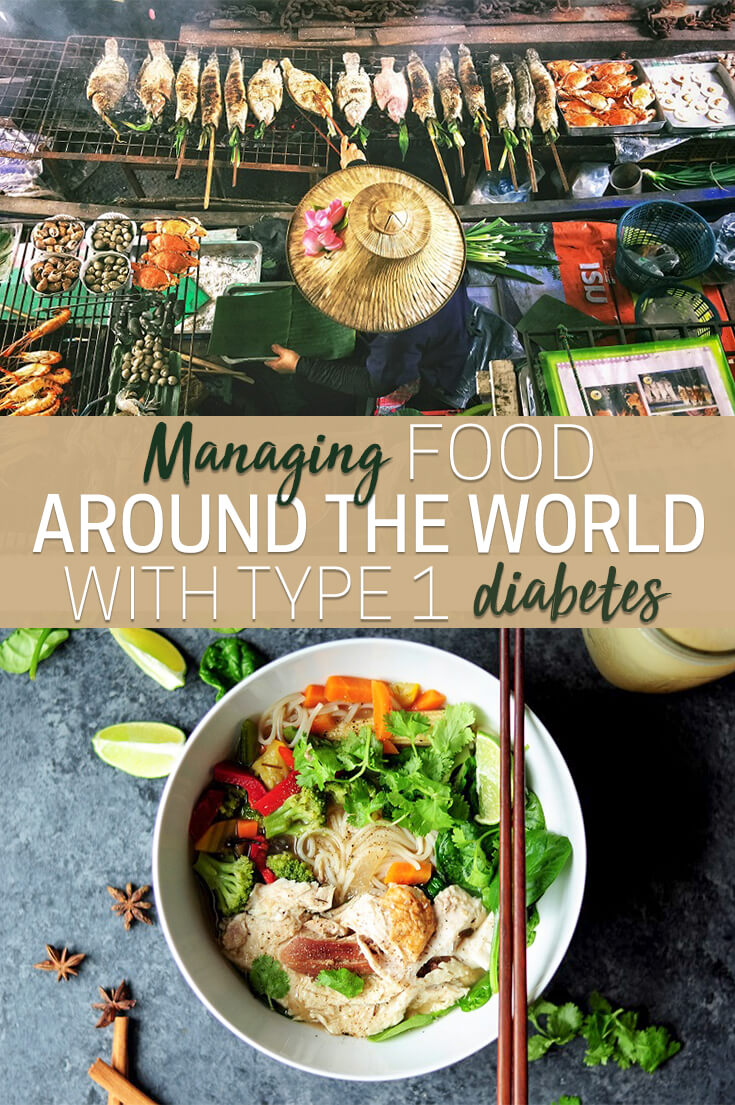
More tips for managing diabetes while traveling around the world from Cazzy Magennis, of Dream Big Travel Far!
Traveling the world means you have access to amazing things to see, do, and most importantly – eat and drink! This can cause some challenges for type 1 diabetics as we often find ourselves counting carbohydrates to manage our insulin doses.
I’ve experienced first-hand the difficulties with adjusting to new foods and drinks in different countries.
So, I decided to put together some of my tops tips for managing food around the world with type 1 diabetes.
– Health Apps –
Carbs & Cals is a fantastic app that allows you to see a visual representation of different foods, along with their estimated carbohydrate count. What this means is that, when you are visiting food markets or dining out anywhere, you can check and compare the food on your plate to a portion size on the app.
This allows you to work out the carbohydrate count for your insulin intake. The app is also available in book form, but long-term traveling requires light luggage, so I think the app is a better idea.
Alternatively, you can use fitness style apps such as MyFitnessPal which will give you an estimated carbohydrate count of thousands upon thousands of foods and drinks – but without the visual picture!
– Practice At Home –
If you know you’re heading to Asia where they consume lots of rice and noodles, use your trip as an opportunity to try your hand at cooking some traditional dishes beforehand!
You can make a variety of “local” dishes and work out the carbohydrates in the portion you would usually take. Of course, it will vary in the actual country to your homemade dish, but it’s a good idea to get a starting point to work with.
– Airplane Food –
Most (if not all) long-haul airlines provide you with the menu that will be on your flight weeks before you fly. Take this opportunity to download the menu and calculate all the estimated carbohydrates in all the meals (in case your first choice isn’t available).
You can then make notes and have a greater chance of calculating your insulin correctly.
Remember that plane travel dehydrates us. If you’re taking advantage of the free alcohol available on long-haul flights, then drink water in between.
I say this because dehydration can push our blood sugars up and there’s nothing worse than feeling ill on a flight across the world!
– Ask Your Server –
Depending on where you are traveling, you may find yourself in some big chain restaurants (I never pass up the opportunity to visit a TGI Fridays). The typical fast food joints like McDonalds, BurgerKing, or KFC usually have their nutritional information online.
If not, why not ask your server when you are dining if they would have a list of the nutritional info? They may even have some packaging they could obtain a carbohydrate count off.
You’d be surprised at the number of people who are willing to assist you this way, so there is absolutely no harm in asking.
– Be Prepared for Hypos –
Eating new foods usually means we overestimate out of fear. It’s natural, but just make sure you’re prepared by having extra hypo equipment with you. Remember, you move around a lot when traveling, so it’s important to take this into account when you bolus for meals.
A busy schedule and movement will reduce your insulin intake in general.
– Last Resort –
Stick to low-carb if you’re worried. With low-carb eating, you are need a lot less insulin, which is good for people who don’t want the effort of working out new carbohydrate counts etc.
When I traveled in South America, I cooked in hostels most of the time. I was consuming a lot of tuna pasta since it was the cheapest food to eat!
However, too much pasta was wrecking havoc on my blood sugars and body because I wasn’t used to it.
This meant I switched my pasta to salad at every meal and my blood sugars were a lot easier to manage. In turn, I had more energy for traveling the world. Street food usually has a wonderful amount of low-carb options and I often find myself eating chicken, beef, sweetcorn and eggs.
– Alcohol –
If you like to party and drink alcohol, then traveling will give you lots of opportunities for this to happen! I do enjoy an alcohol-fueled evening every now and then and I often have one drink in the evening when traveling.
Sometimes it’s wine, cider, vodka or even a cocktail. We all know that alcohol lowers your blood sugar and when you add that to the mix of adjusting to new climates/timezones/altitudes, it can be a little tricky to manage.
When you’re at a massive party, something like the full moon party in Thailand, it takes some planning to last a full evening of drinking and partying without a hypo. If you are drinking socially, make sure you monitor your blood sugars extremely closely.
Different alcohols affect every diabetic different. In general, drinks like cocktails, wine and beer/cider raise your blood sugars before they make them drop. Whereas, spirits such as vodka, gin, cachaca and pisco, are generally carbohydrate free, so they won’t raise your blood sugars.
Tips for managing different alcohols:
- Cocktails/Wine/Beer/Cider: Since all these alcohols have carbs in them, it’s important to take note of the carbohydrate count. Don’t take the full dosage of the carbs as you normally would, as you will drop. Start with a quarter of the dose until you know how your body reacts with it, then you might find you need half the dose, or none at all, to avoid prolonged hypos.
Remember this will also vary if you’re dancing, as physical activity will also drag your blood sugar down, in which case I recommend drinking full fat mixers.
- Spirits: This is often my drink of choice because it’s easier to manage. If your blood sugars are level before drinking, then you will find you will probably need some food if you are just drinking spirits and diet mixer.
– In The End –
Everything is about trial and error and you won’t get it perfect every time. It’s about staying healthy and making healthy choices. Remember you can’t travel if you’re body isn’t working as it should be.
Use these tips to try and tackle the wonderful new food and drinks you get to experience when you are traveling the world with type 1 diabetes.
If you’re interested in more tips, I’ve spent the last 5 months producing a new E-book on ‘The Ultimate Guide to Travelling with Type 1 diabetes’, and all my wonderful fellow type 1 diabetics who read my posts on The Blonde Abroad are welcome to a 40% discount with the code “BLONDE40”.
Comment below with any other tips you have!
Read Next: Travel Checklist for Type 1 Diabetes
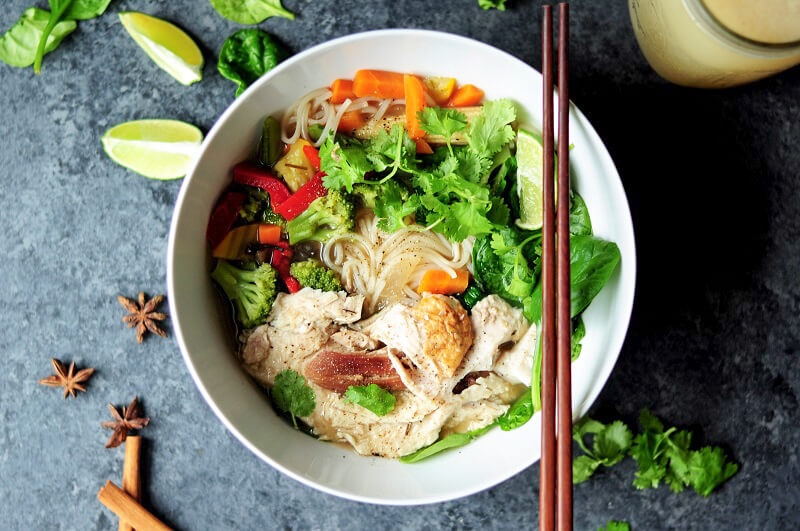
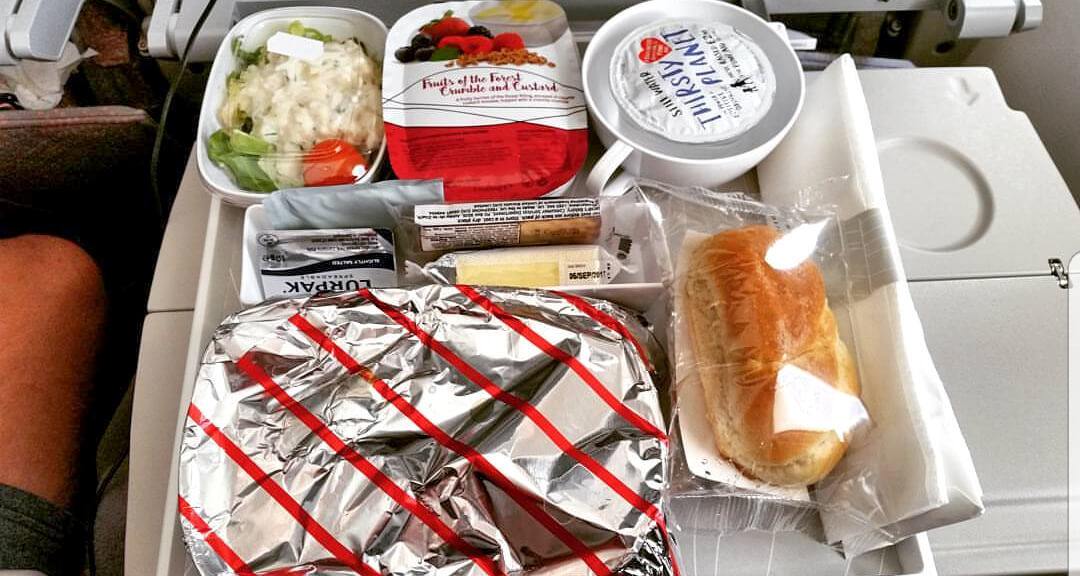
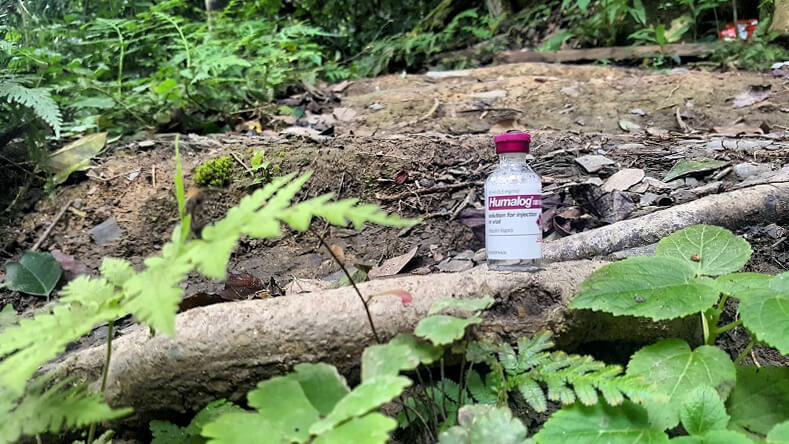
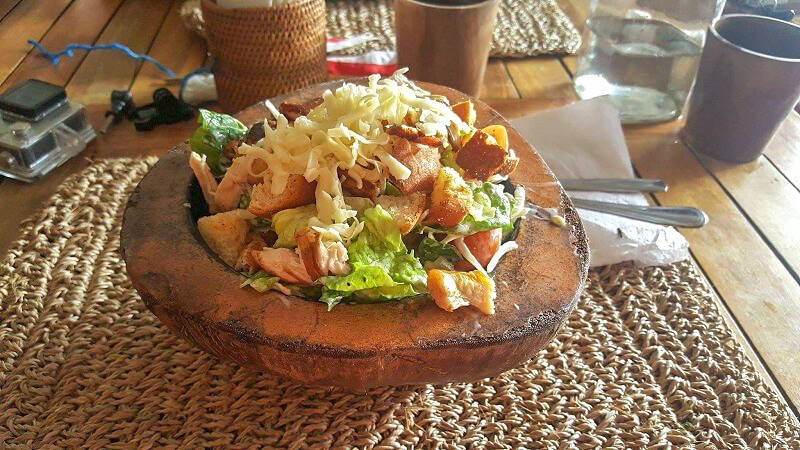
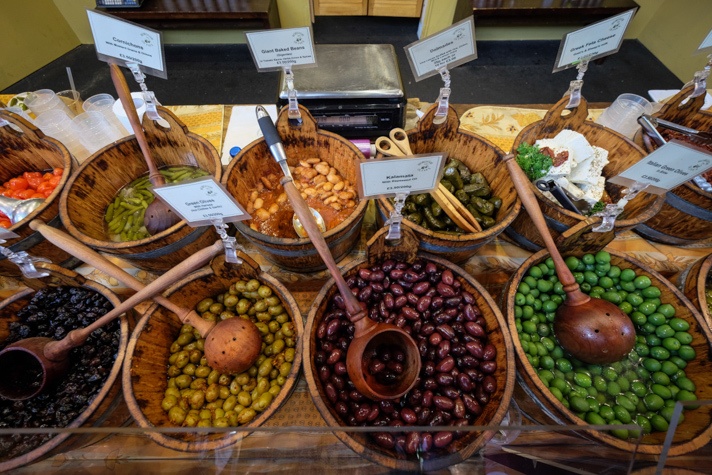
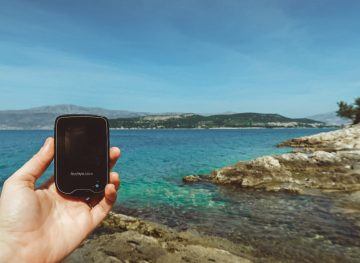
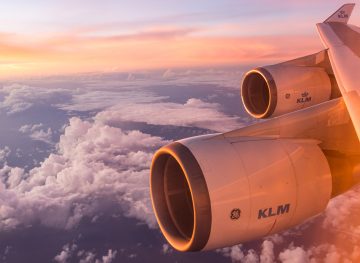




My dad’s type 2 so there’s a bit of a difference between your experiences. But, I can understand the challenges will monitoring glucose levels when traveling. Been there, done that. Great tip on drinking more water on the plan. High altitude dehydrates us so it really helps. For us, it also helps a lot calling the airlines beforehand about the meals. Many of them will make special arrangements to make your meal diabetic friendly or anything else, like low sodium, etc.